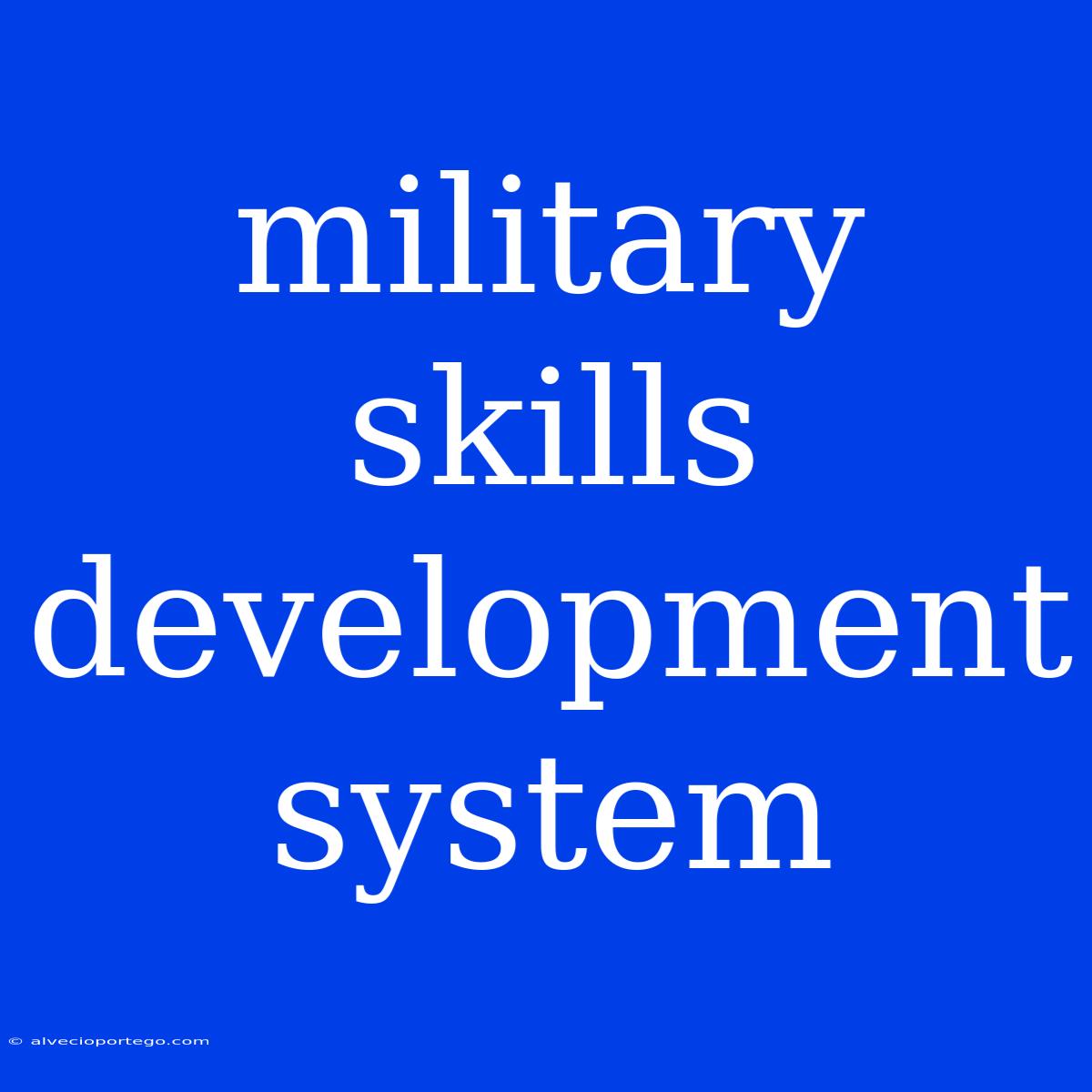A Comprehensive Military Skills Development System: Building Effective Combat Forces
The modern battlefield demands a highly skilled and adaptable fighting force. This necessitates a comprehensive military skills development system that prioritizes both individual proficiency and unit cohesion. This article delves into the essential elements of such a system, exploring how it can be structured for optimal effectiveness.
1. Initial Training: The Foundation of Competency
Initial training is the cornerstone of any military skills development system. It provides recruits with the foundational knowledge and skills necessary to operate effectively as part of a larger unit. This phase typically covers:
- Basic Military Skills: Physical fitness, weapon handling, first aid, fieldcraft, map reading, and basic communication.
- Unit Cohesion: Teamwork, discipline, leadership, and understanding of military hierarchy.
- Core Values: Integrity, honor, courage, commitment, and selfless service.
Effective initial training should be rigorous, challenging, and tailored to the specific needs of each branch of the military. It must also incorporate practical exercises to ensure recruits can translate theoretical knowledge into real-world application.
2. Advanced Training: Specialization and Mastery
Once initial training is complete, soldiers progress to specialized training that aligns with their chosen military occupational specialty (MOS). This phase focuses on developing in-depth proficiency in specific areas, including:
- Technical Skills: Operating complex weapons systems, conducting intelligence operations, providing medical support, or managing logistical operations.
- Tactical Skills: Developing advanced combat tactics, planning and executing military operations, and adapting to evolving threats.
- Leadership Development: Training junior leaders to command, motivate, and lead their units effectively.
Advanced training should incorporate realistic simulations, hands-on exercises, and mentorship from experienced veterans. It should also foster critical thinking and problem-solving skills, preparing soldiers for complex and unpredictable situations on the battlefield.
3. Continuous Professional Development: Maintaining Edge
Military skills development is not a one-time process. Continuous professional development is crucial for maintaining competency and adaptability in a constantly evolving environment. This involves:
- Regular Training and Drills: Maintaining proficiency in core skills and adapting to new technologies and tactics.
- Advanced Courses and Certifications: Furthering specialized knowledge and skills in specific areas.
- Professional Development Programs: Building leadership skills, improving decision-making, and fostering strategic thinking.
- Exposure to Real-World Operations: Gaining practical experience through deployments and peacekeeping missions.
Continuous professional development empowers soldiers to stay ahead of the curve, adapt to changing threats, and remain effective throughout their careers.
4. Assessment and Evaluation: Tracking Progress and Identifying Gaps
A robust skills development system requires a comprehensive assessment and evaluation framework. This allows for:
- Individual Performance Tracking: Monitoring progress and identifying areas for improvement.
- Unit Proficiency Assessment: Evaluating the overall effectiveness and cohesion of units.
- Identifying Training Deficiencies: Identifying gaps in skills and knowledge and adjusting training programs accordingly.
- Promoting Meritocratic Advancement: Recognizing and rewarding excellence in skills development.
Regular and objective assessments provide valuable feedback for individuals and units, driving further improvement and optimizing overall combat effectiveness.
5. Technology Integration: Enhancing Training and Performance
Technology plays an increasingly important role in military skills development. This includes:
- Virtual Reality and Simulation: Providing immersive training environments for complex scenarios.
- Data Analytics: Tracking individual and unit performance, identifying strengths and weaknesses.
- Artificial Intelligence: Personalizing training programs and providing real-time feedback.
Leveraging technology can significantly enhance training efficiency, effectiveness, and ultimately, combat performance.
Conclusion: Building a Force for the Future
A comprehensive military skills development system is crucial for creating a highly effective and adaptable fighting force. By investing in initial training, advanced specialization, continuous professional development, assessment and evaluation, and technology integration, militaries can ensure their personnel are equipped to meet the challenges of modern warfare and secure a future of success.

